Cast vs Fabricated: Pros and Cons for Your Signage (With Examples)
When choosing between cast vs fabricated for your signage, the decision goes beyond just looks. Both processes use metal to create eye-catching signs, but each has its own distinct pros and cons in terms of durability, cost, and customization options.
Whether you’re looking for intricate detail or longevity, Impact Signs has been hand-crafting quality custom metal signs since 1989. Cast is commonly used for letters and plaques, while fabricated is more frequently used for letters and panel signs.
In this guide, we’ll explore the key differences between cast vs fabricated metal signs, with real-life examples to inform and inspire your next project.
What is cast metal?
Cast metal is created through casting production, where molten metal is poured into custom molds, then solidified. Once solidified, the metal is sanded and finished.
Cast metals are extremely durable and long-lasting because they are produced as one solid piece. Materials like cast bronze and cast aluminum are popular weather-resistant options that can withstand corrosion and extreme temperature fluctuations.
Cast metal also needs very little upkeep once it’s installed, making it a great option for both letters and plaques.. You can add an anodized or oxidized coating to keep it looking polished or let materials like bronze develop a natural patina over time to add character.
Uses for cast metal
Cast metal is a classic choice for plaques and letters because it’s timeless and sturdy but also popular for other purposes. Some uses include:
- Door hardware
- Building numbers
- Art and sculptures
- Machinery and appliances
- Grave markers
- Trophies or awards
At Impact Signs, we use cast metal for aluminum and bronze plaques. We can also create cast aluminum and cast bronze letters.
Pros and cons of using cast metal for signage
Custom metal casting is versatile for signage, but to determine if it fits your needs, first consider these pros and cons.
Pros
Cast metal, when used as a plaque material, is reliable and high-quality, among these other benefits:
- Very durable: Cast metal is a durable outdoor sign material that’s highly resistant to weather and corrosion.
- Low maintenance: Once it’s installed, a cast metal sign requires minimal care which can save you costs down the line.
- More traditional designs: The molding process creates amazing metal plaques for classic and timeless designs.
Cons
Although cast metal letters and plaques are popular for its durability, there are some drawbacks to consider:
- Weighs more: Because it’s cast in one solid piece, it’s much heavier, and installation can be more challenging.
- Limited options to update: Once it’s cast, it can’t be updated. Any mistakes mean remaking the letters or plaque.
Examples of cast metal signage
Cast metal is a dedicated choice for plaques and letters.
To inspire your design project, here are some casting examples:
Business signs
Cast metal architectural signage can elevate your business with a sophisticated display that also enhances your brand identity. A cast plaque outside your business projects professionalism and trust to your clients.
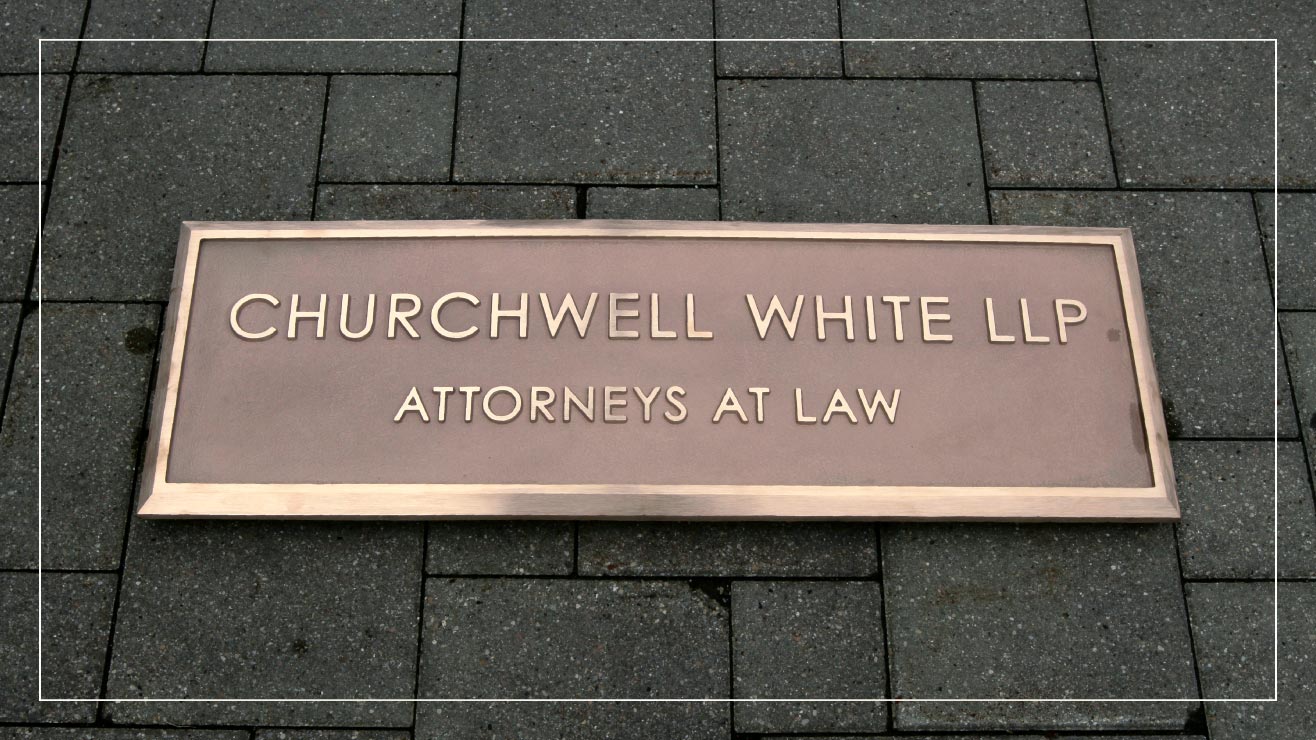
Donor recognition walls
Cast metal is often used for donor walls, and its sleekness is great for businesses, nonprofits, or large organizations. Large nonprofits or hospitals might display donor names on cast brass plaques as a tribute to their generosity and support.

Memorial plaques or tributes
Memorial tributes, like plaques or veteran memorial monuments, are a meaningful way to honor loved ones. With custom photo options and weather-resistant finishes, memorial plaques in cast bronze or cast aluminum ensure that the tribute lasts for years to come.
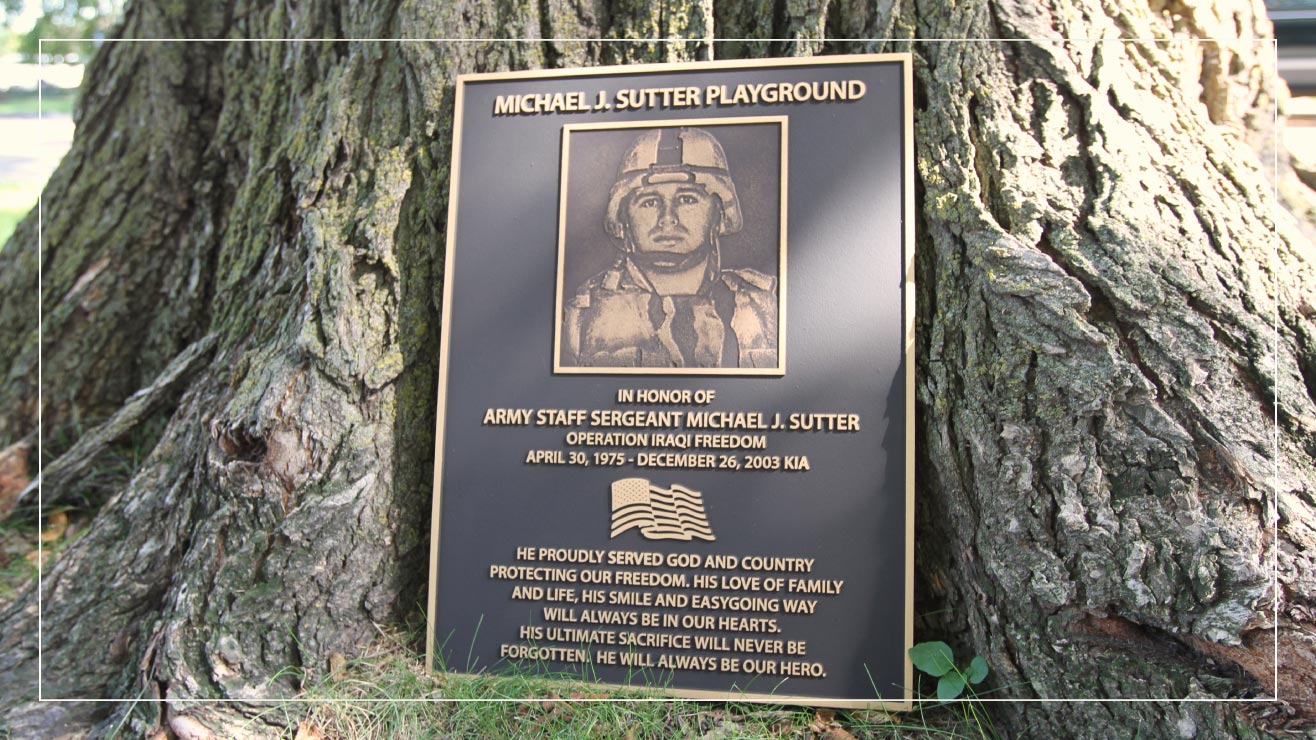
Address plaques
To add style and functionality, you can use custom-cast metal signage to display address plaques or building numbers. Boutique hotels or retail stores typically use cast plaques to highlight their address and complement the building’s architecture.
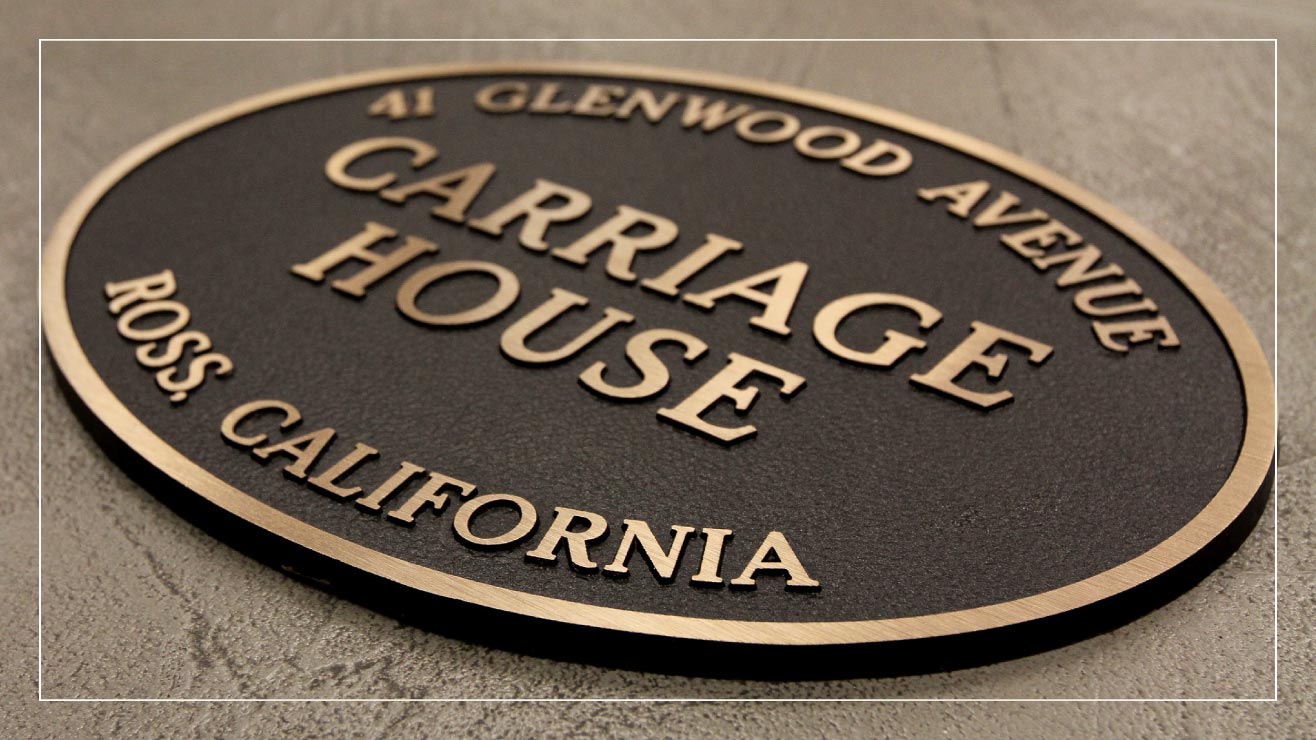
Letters
Cast metal can also be used in lettering if you don’t want a full sign.
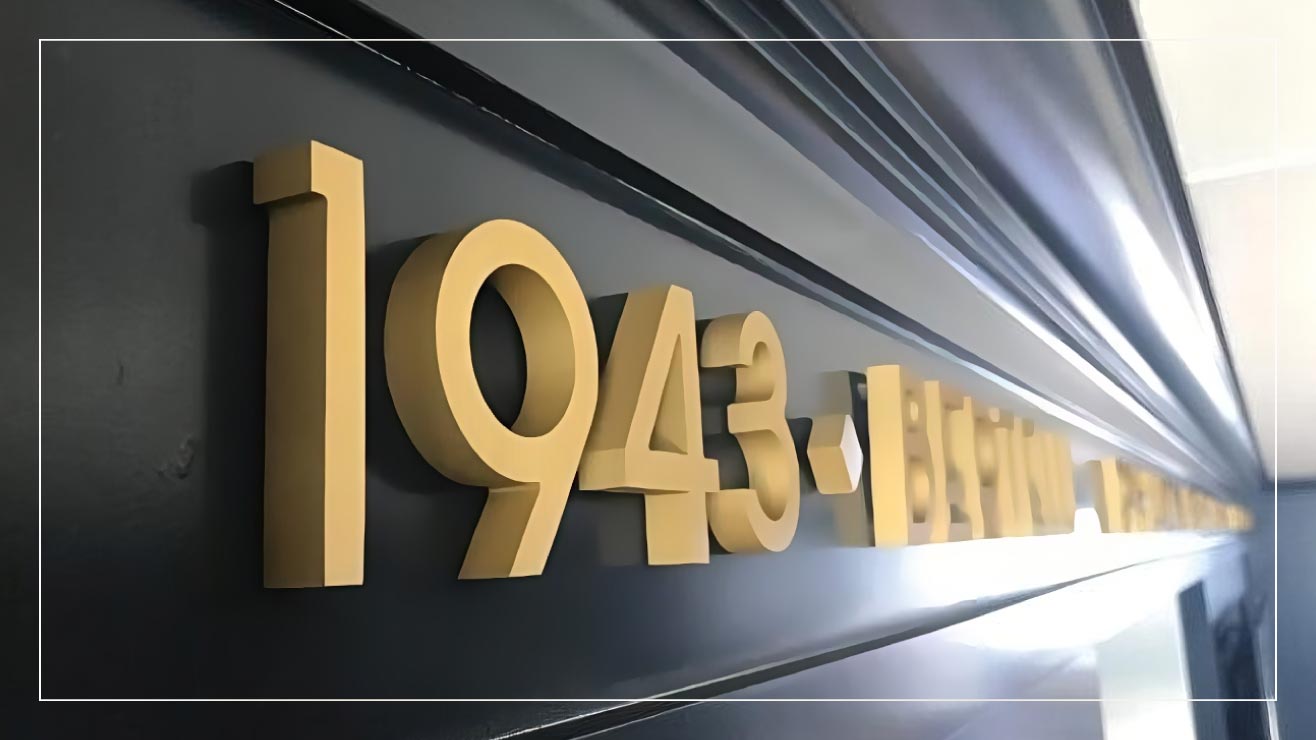
Cast bronze letters have a satin, polished, or dark oxidized finish for the perfect look. You can even add halo LED backlighting to make them stand out at night on the side of a building. For a unique look, use the architectural font (one of the best fonts for signs) with a prismatic face.
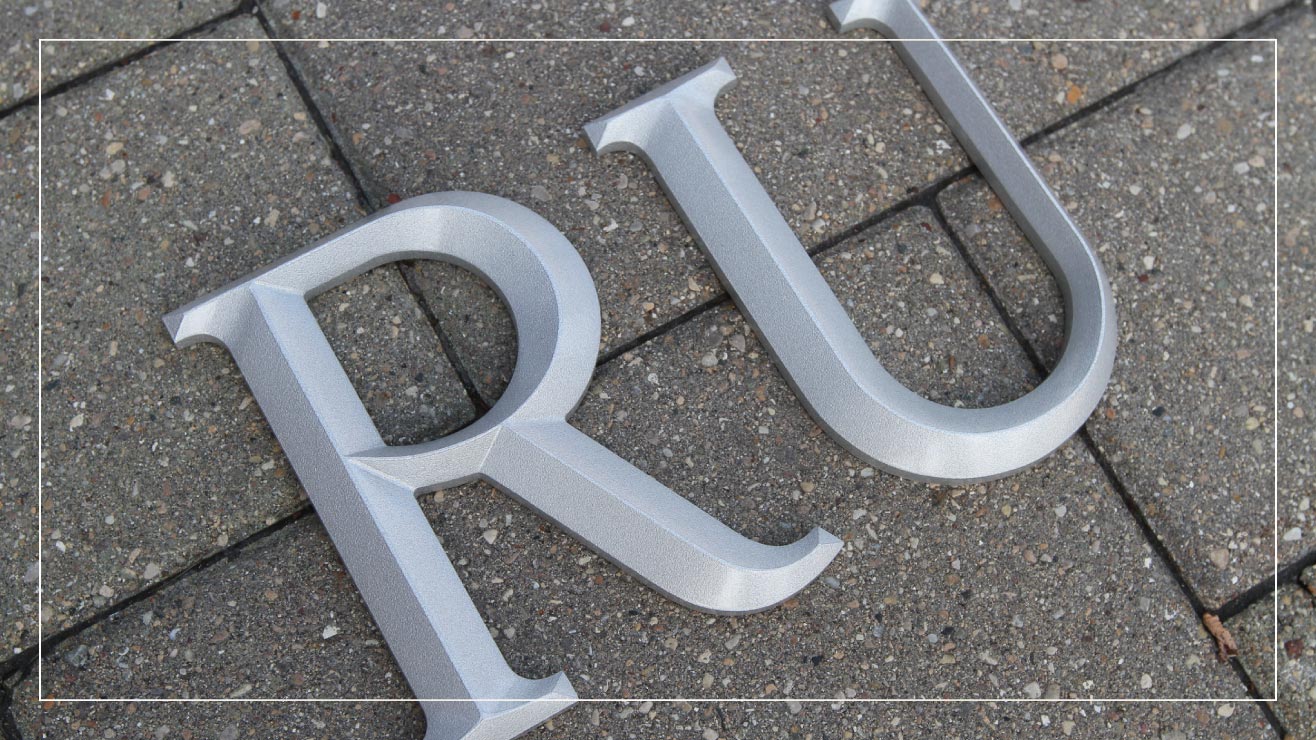
Cast aluminum letters come in satin finished for a more brushed appearance or anodized finish for a matte or bright finish. Like cast bronze letters, you can dress them up with halo LED backlighting. They are perfect for outdoor architectural signage that needs to be clear yet stylish from a distance.
What is fabricated metal?
Fabrication starts with a solid metal sheet (typically steel) that’s then shaped into custom designs using different techniques like cutting, bending, or welding.
For fabricated metal letters specifically, the metal sheet is laser cut for the faces of the letters. Then a coil or band of metal for the sides is soldered to the face before final finishing is completed.
Unlike casting, fabrication techniques give you more control over the final product to create precise shapes with sharp lines and clean edges.
Fabricated metal is modern and versatile. Plus, it’s lighter than cast metal, which makes it easier (and usually cheaper) to install for larger or more complex projects.
Uses for fabricated metal
Metals like stainless steel, aluminum, and brass are common for fabrication uses, including:
- Architectural designs
- Lighting fixtures
- Industrial equipment
- Art installations
- Furniture
- Rails and fences
Pros and cons of using fabricated metal for signage
Fabricated metal signs are cost-effective options for a contemporary and sleek appearance. However, there are also some limitations to consider.
Pros
Fabricated metal has a few perks in terms of versatility and design:
- Lightweight: Fabricated metal signs are lighter, which can help reduce installation costs.
- Modern design options: Because fabrication is more precise, you can experiment with custom shapes and sizes or signage lighting types.
Cons
Despite the cost-saving benefits, fabricated metal signage comes with these potential drawbacks:
- More malleable: Fabricated metals are easier to shape but may need more maintenance over time.
- Limited update options: Once fabricated, it’s difficult to modify a fabricated sign without damaging it.
- Longer production times: There are more complex steps with fabricated metals than with casting or manufacturing vs fabrication methods.
Examples of fabricated metal signage
Fabricated metal signage is ideal for modern businesses or public spaces that require more flexible design options. You also have the option to add backlighting to illuminate both interior and external environments. Here are some fabrication examples:
Fabricated letters
A college, university, or public park might use fabricated stainless steel letters for streamlined signage with a satin or polished finish. Stainless steel letters made from alloy 316 are extra durable for marine environments, or you can add a titanium coating in silver, black, or bronze. To ensure they stand out even at night, add a backlight.
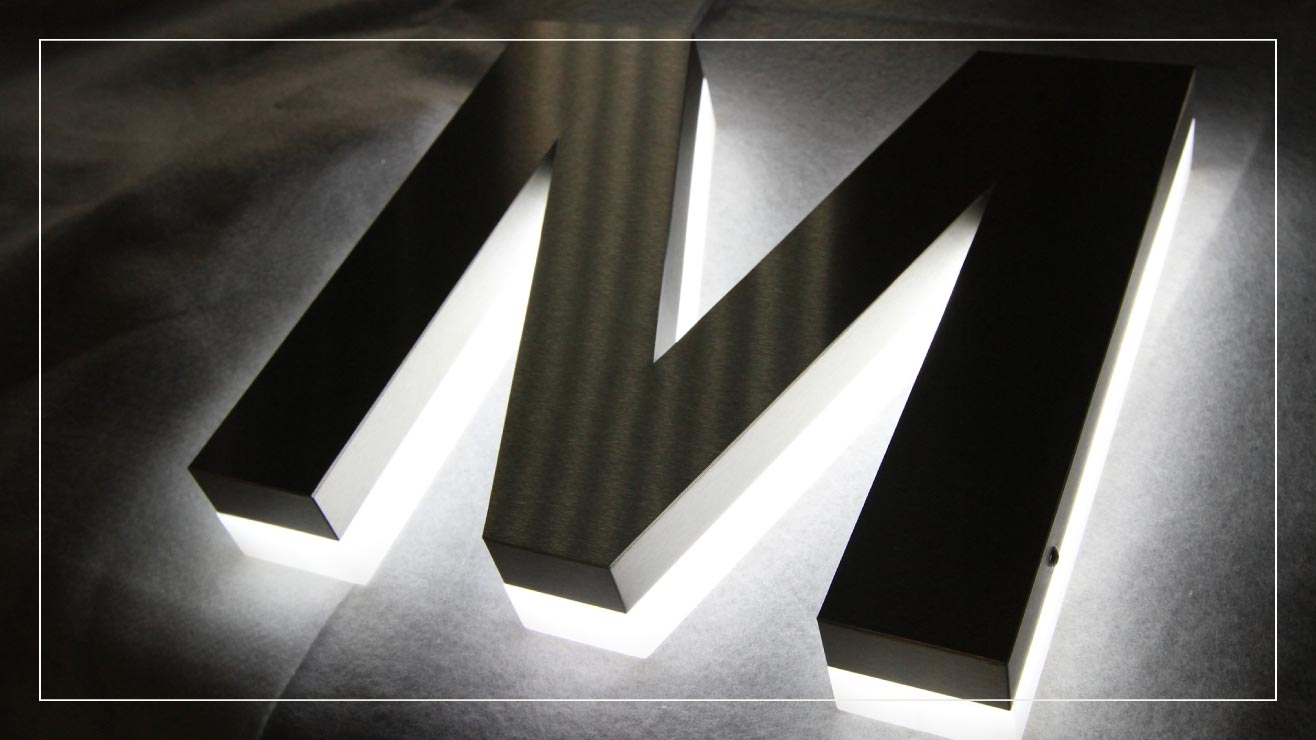
Fabricated aluminum letters are great for larger-sized letters. Like their fabricated stainless steel counterparts, you can make them pop outdoors with backlight and they can be painted to your desired color.
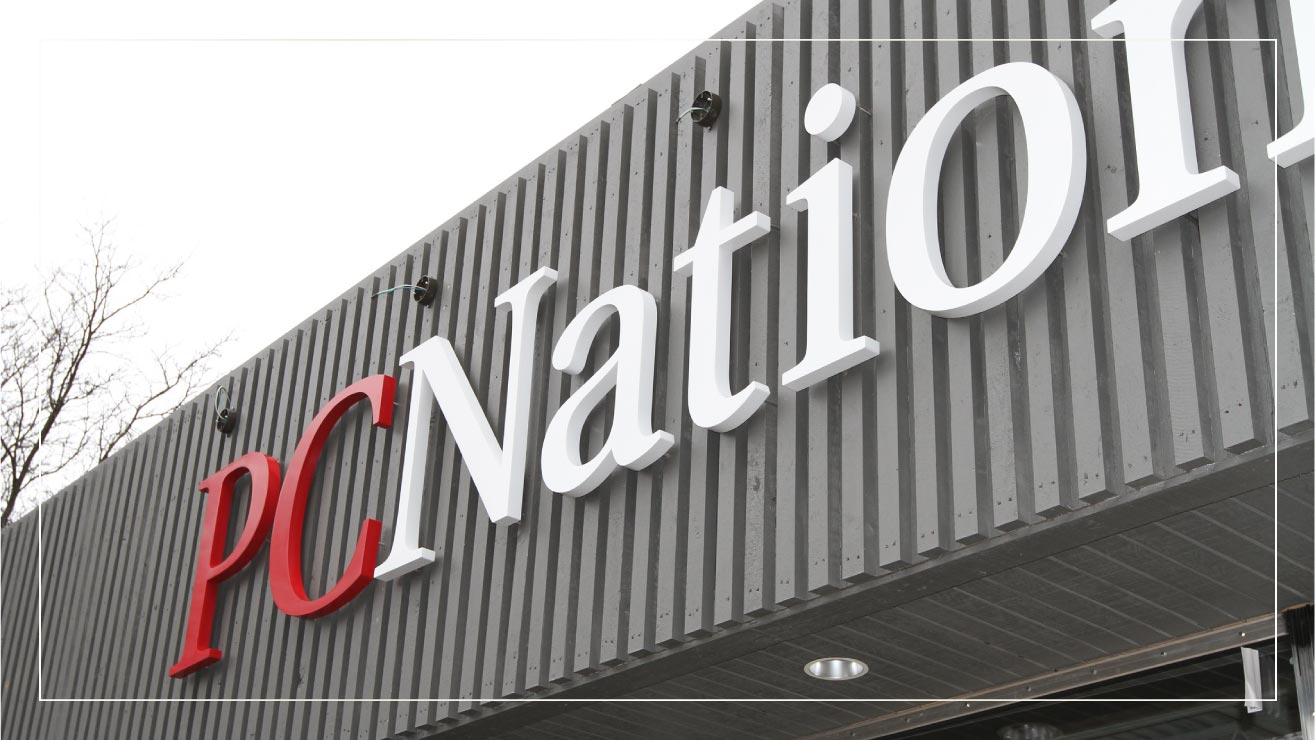
Exterior and interior fabricated panel lighted signs
For a standout feature, consider mixing fabricated metal with lighted exterior signs. Fabricated metal letters with halo lit signs for branding make excellent business identification and storefront signage, while fabricated panels with push through lighted letters add style to your interior office lobby signs.
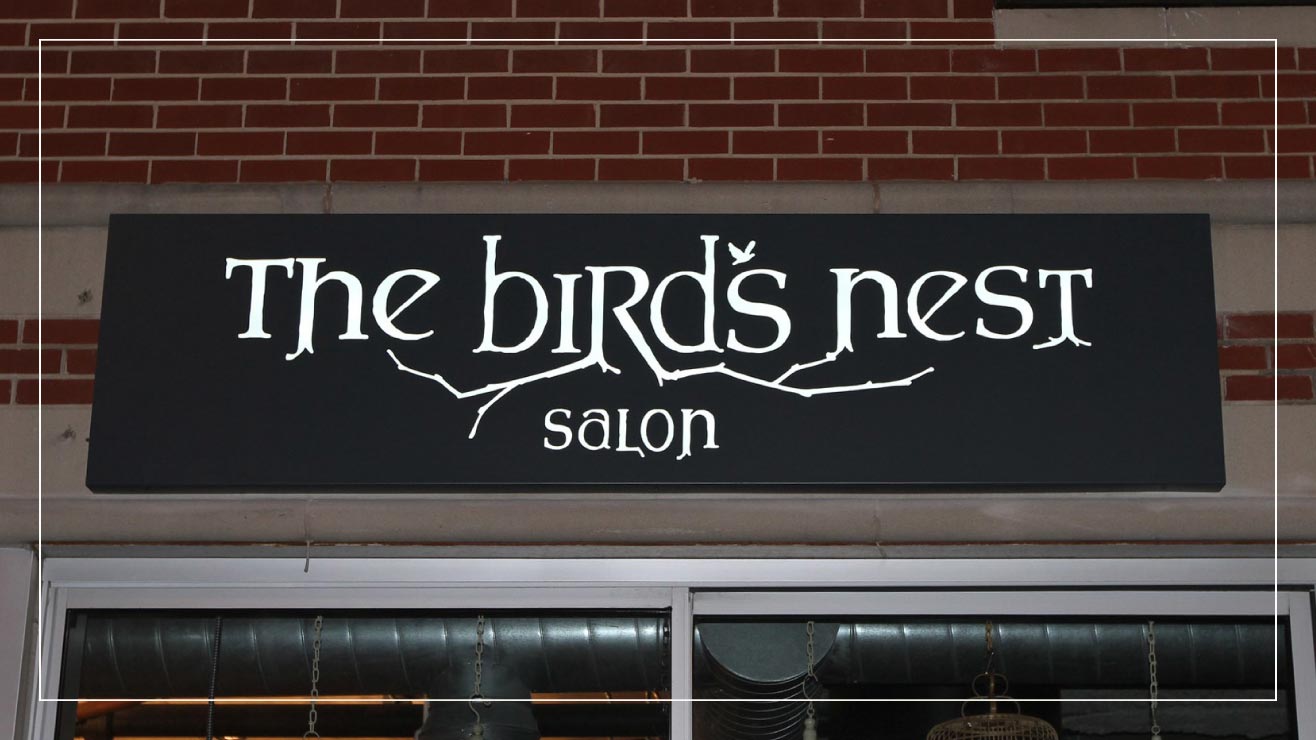
Choose the right cast vs. fabricated signage for your business
Which examples caught your eye? Whether you choose cast or fabricated signage, the right sign can make a powerful statement about your business.
Connect with our design experts to get a custom quote tailored to your needs and interests. Our time-tested process ensures you are in good hands every step of the way.
Cast vs fabricated FAQs
Learn more about the use of cast and fabricated metal in plaques and letters.
How do I know if cast or fabricated signage is right for my needs?
Since both cast and fabrication signage can be customized, the choice between the two depends on your desired style and budget. Cast metal is typically more durable and traditional, while fabricated metal is better for high-end and modern designs.
Which is more cost-effective, cast or fabricated signage?
Fabricated signage is more cost-effective upfront because of the material costs and installation, but cast signage has better longevity, which may save you money over time.
What type of signage is better for indoor and outdoor use?
Fabricated signage is great for indoor or outdoor use but is more common for businesses and offices. Cast metal signage is more durable for outdoor locations like parks, buildings, and monuments.
Are there any size limits to cast or fabricated signs?
Since the mold size limits cast signs, there are more restrictions. For larger and custom design projects, fabricated signs will give you more flexibility with the size options since sections can be assembled.